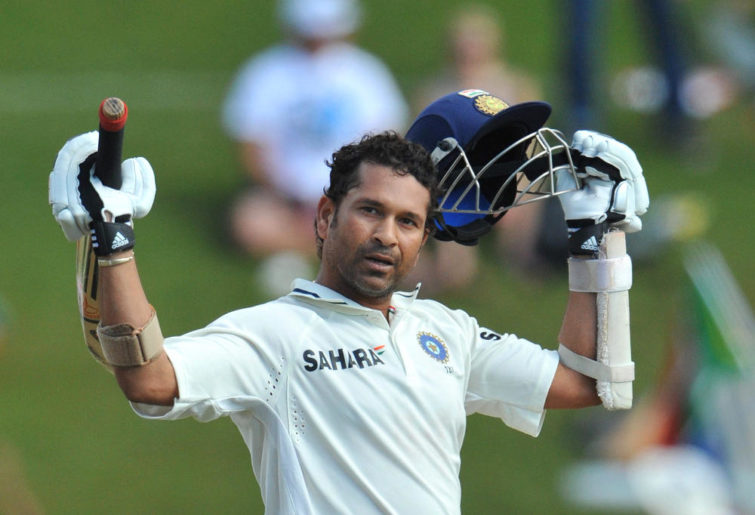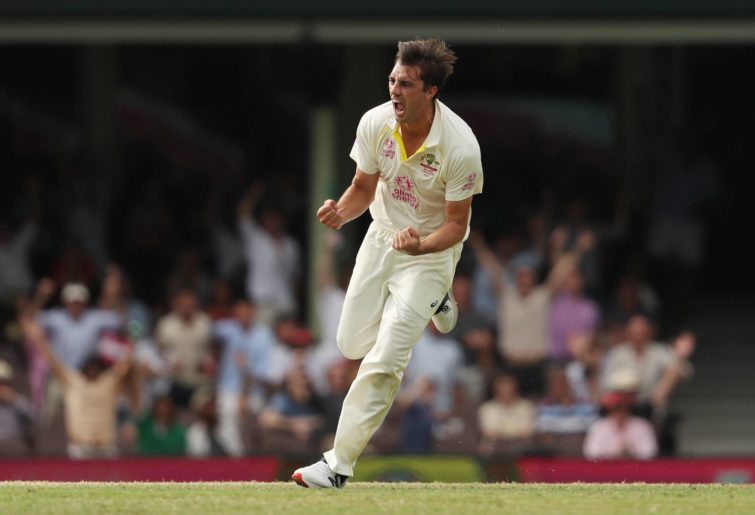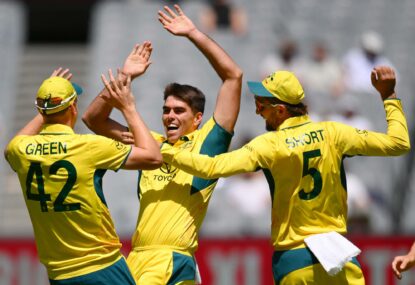This is the third article looking at how Test matches finish. This time we will look at the batters who have been there most often to hit the winnings runs, or just waiting at the non-striker’s end to celebrate.
Batters hitting the winning runs
In the Ashes series of 1882, Australian Sammy Jones was on hand to hit the winnings runs in consecutive Tests, becoming the first player in history to finish off a Test with the bat on more than one occasion.
Jones’ scores were 13 and six, so he did not exactly do the heavy lifting. But he was there at the end. He was also lucky to do it a third time in 1884. Given Australia only won five matches during Jones’ Test career, that is a remarkable strike rate.
A batter can get the sweet feeling of hitting the winning runs after scoring a remarkable chasing hundred like Adam Gilchrist’s 149 not out against Pakistan in Hobart in 1999 or marching out with one run to win like West Indian Gordon Greenidge against India in 1983 in Bridgetown.
Facing this huge task, Greenidge took strike against less than noted opening bowler Syed Kirmani (the Indian wicketkeeper), who promptly delivered a no ball to end the Test. Either way, you can’t hit the winning runs from the dressing room, so being there counts.
So who has got to hit the winning runs most often?
The absolute stand-out is Ricky Ponting, who played the final shot nine times. This might seem like dumb luck or longevity, however no one else has done it more than seven times and Ponting did it the hard way with two centuries and another four scores of at least 40.

(James Knowler/Getty Images)
Only once did he have to contribute less than ten.
Ponting liked to finish with a statement, hitting a boundary on seven occasions, including two sixes. Ponting also celebrated from the non-striker’s end a further four times.
Ponting went through a golden period in 2004-05 where on the four occasions Australia won by chasing a total, he was on hand to hit the winning runs three times, while being at the non-striker’s end on the fourth.
Two wins in consecutive Tests were off Pakistan leg spinner Danish Kaneria with a six and a four (the latter being his only scoring shot for the innings).
Gordon Greenidge hit the winning runs seven times and Desmond Haynes did so six times. Between them, the great West Indian opening pair hit the winning runs 13 times.
For seven of those wins, their opening partner was standing at the non-striker’s end ready to celebrate. Greenidge’s defining movement was in 1984 at Lord’s, where his 214 not out from a total of 344 turned a steep chase into a nine-wicket victory.
Others to be there at the end regularly are as follows.
Gary Kirsten (South Africa) had seven, plus he was at the non-striker’s end a further two times.
Sachin Tendulkar (India) had six, plus four times at the other end.

(Duif du Toit / Gallo Images/Getty Images)
Graeme Smith (South Africa) had six. The tough-as-nails South African captain scored a record three unbeaten centuries while successfully chasing targets.
However one of his other chases ended pretty easily, when in 2004 the last two balls he faced from West Indian Fidel Edwards were four byes followed by five wides. Smith was also at the non-striker’s a three times as the winning runs were scored.
Misbah-ul-Haq (Pakistan) had six. As stated in a previous article, Misbah remarkably ended four of these Tests with a six.
He never finished a Test at the non-striker’s end, so someone must have been deferring to the captain. On four of these six wins, Misbah was watched by Younis Khan at the non-striker’s end.
Mark Boucher (South Africa) had six, plus two at the non-striker’s end (to go with the ten Tests he finished with either a catch or stumping).
These players got the glory, but who got to lean on their bat at the other end and soak it all in?
Desmond Haynes (West Indies) was at the non-striker’s end a further 12 times to go with his six winning hits above. The great West Indian’s scores ranged from zero to 112. His partner in crime Gordon Greenidge was only at the non-striker’s end three times in wins.
Jacques Kallis (South Africa) was at the non-striker’s eight times to go with his four actual winning hits.
Rahul Dravid (India) was at the non-striker’s end eight times when victory was achieved, but only got to hit the winning runs twice.
Alastair Cook (England) sat at the non-striker’s end seven times, but only actually struck the winning runs once.
Matthew Hayden (Australia) had six, plus he hit the winning runs a further five times.
Younis Khan (Pakistan) was at the non-striker’s end six times but thanks to Misbah the ball hog, he only got to hit the winning runs twice.
Nevertheless Younis followed his leader’s example by smacking two sixes in a single Muttiah Muralitharan over to finish a Test in Colombo in 2000.
Graham Thorpe (England) had five times each at the striker’s and non-striker’s ends. Thorpe was not a man to leave things to others.
Putting all of that together, no one comes close to Desmond Haynes being able to savour victory at the batting crease from one end or the other a whopping 18 times.
The freeloaders
How many batters have been at the crease, getting that winning feeling without actually, you know, doing anything?
Heaps as it turns out. There have been fully 81 different cases where a batter has finished a successful chase with exactly zero runs to his name, the most recent being our own Marnus Labuschagne at the Gabba last year against England in Australia’s nine-wicket win.

(Photo by Ryan Pierse/Getty Images)
Four players have got to do nothing for the win twice: Wilfred Rhodes (England), Marvan Atapattu (Sri Lanka), Ricky Ponting (Australia) and Jacques Kallis (South Africa). Thanks to a bower conceding extras, some of these players even got to face the last ball.
A further 18 players got to hit the winning single and finish with a score of one not out.
At the other end of the spectrum there have been 41 instances of a player finishing on an unbeaten century to win a Test. They are the who’s who of cricket royalty. Consider the first four players to ever achieve this feat: Jack Hobbs, Don Bradman, Neil Harvey and Garry Sobers.
Kiwi star Kane Williamson has achieved this feat twice, but he is outshone by Ricky Ponting and South African Graeme Smith, who each did it three times.
There have been two unbeaten double centuries to win Tests, by West Indians Gordon Greenidge and Kyle Mayers.
Partnerships
The average winning partnership over Test history is 38. On 17 occasions all that was required and achieved was a partnership of a single run. At the other end of the scale there have been 46 Test matches won with a century final stand.
The highest three unbeaten partnerships to win matches have been:
1. 287 between West Indians Gordon Greenidge (214) and Larry Gomes (92) to defeat England at Lord’s in 1984.
2. 189 between Sri Lankans Aravinda de Silva (143) and Arjuna Ranatunga (87) to defeat Zimbabwe in 1998.
3. 187 between Australian’s Geoff Marsh (79) and David Boon (94) to defeat England in 1990 at the MCG.
The poor bowler having to deliver the final over
Every now and then a Test finishes on a knife’s edge, the bowler straining every last aching muscle for that final breakthrough. Sometimes the bowler smashes the stumps, Pat Cummins style. Sometimes they successfully salvage a draw by cutting off the winning runs.

(Photo by Mark Metcalfe – CA/Cricket Australia via Getty Images)
But more often the bowler is simply doing his duty, lobbing the final over down for the batter to give the Test match its last rites and put him out of his misery.
Why is it that bowlers have to take the losses most often in both methods of finishes to a Test (i.e. runs or wickets)? It truly is a batter’s game.
More than 430 bowlers have had to face the final indignity. Only five have had to front up on at least five occasions.
The usual suspects are there – the prolific spinners Murali (a whopping nine times), Shane Warne (six) and Rangana Herath (five), typically bowling on a fifth-day pitch and never believing they are beaten.
But among them are two very odd names. West Indian Marlon Samuels got slapped for the winning runs on six occasions, as many as Warne.
Given he was a definite part timer who only took 41 Test wickets across 71 matches, the only conclusion I can draw is that Marlon may not have been very well liked by his captains.
The last man on the list is a player long forgotten. South African Tufty Mann played just 19 Tests between 1947 and 1951. The team lost 11 of those and on five occasions it was up to Tufty to deliver himself up as the final sacrifice with his slow left-armers.
I’m pretty sure he thought nothing of it. Mann had experienced many worse things in life than losing on a cricket pitch.
He had lived behind the false wall of a pigsty for nine months as an escaped prisoner-of-war in north-eastern Italy during the latter stages of the Second World War. When Mann walked down the troopship gangplank at the end of the war, he was so emaciated that his wife didn’t recognise him. Tufty passed away in 1951 aged just 31.
Next time I will reveal the triple threats: players who have been lucky enough to take the last wicket, hit the winning runs and make the final play in the field at some point in their careers.








































































































